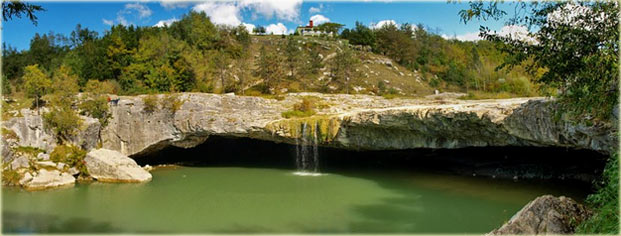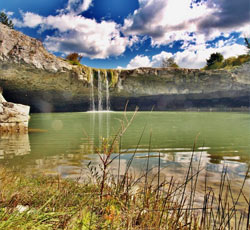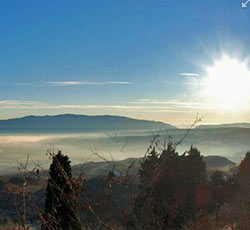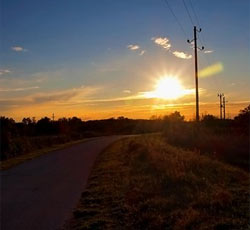-
Pazin is a town of long and rich tradition. It is situated in the very centre of Istrian peninsula, only 30 km away from well-known tourist centres.It is the center of Istrian prefecture. The intensity of life here is pretty much the same in winter and summer, with the monthly exception of every first Tuesday, when a flood of curious buyers from all over the Istria runs into the town to visit the traditional Pazin Market.
Pazin (Central Istria)
Pazin, Travel Guide for holidays in Pazin, Istria
Pazin – Points of interests
 Written documents mentioned Pazin in the 10th century. The town has developed on a hill overlooking Pazinčica stream. Right above the precipice stands the old tower on a rugged cliff. New Pazin developed in the valley beneath . The town of Pazin has been an important religious center and a seat town of the bishopry.
Written documents mentioned Pazin in the 10th century. The town has developed on a hill overlooking Pazinčica stream. Right above the precipice stands the old tower on a rugged cliff. New Pazin developed in the valley beneath . The town of Pazin has been an important religious center and a seat town of the bishopry. Pazinski kaštel The Pazin Castle is the biggest and the best-preserved medieval fortress in Istria. It was first mentioned in written documents in 983. Since that time, the Castle and the growing civil area that surrounded it have been given as present, conquered and sacked, destroyed, rebuilt and sub-leased many times. It has changed owners, managers and names. It was under the dominion of Patriarchate of Aquileia, and then under the County of Gorizia. Since 1374, the whole County had been a private property of the Austrian house of Habsburgs. Today, the Ethnographic Museum of Istria and the Museum of Pazin are located there, and their exhibitions are held.
The parochial church of St. Nicholas Originally built in 1266, it was rebuilt in 15th and 18th centuries. Especially interesting is its web-like (or star-shaped) presbytery with a fresco cycle painted around 1460. Those frescoes belong to the highlight of late Gothic Art in Istria. The same way of vault shaping has been used later, in some other Istrian churches, including the one by the Franciscan monastery. In 1705, a 45m high bell-tower was added to the church.
The Franciscan Monastery The monastery and the church of the Visitation of the Holy Virgin originated from the middle of the 15th century. The church has a late Gothic presbytery based on the model of St. Nicholas. During the past centuries, the Franciscans held the pharmacy and the hospital in the monastery. A public school was there from 1781 to 1834, and a grammar school with classes in German from 1836 to 1873. The Church has given a privilege to Franciscan order – everyone who visits the church of the Virgin of Angels in Assisi on August 2 gets an absolution of sins. That custom spread to many Franciscan churches including the one in Pazin.
The Public Records Office The Public Records Office in Pazin is one of the richest archives in Croatia by its archival material, and by its notarial legacy. It leaves even some big archives behind. The Royal State Grammar School – the first grammar school in Istria with classes in Croatian operated here from 1899 to 1919.
The Roman Catholic Seminary One of the most noticeable buildings in town is the building of former Catholic Seminary in Juraj Dobrila Street. The building was built by the Student Support Society for Istria before the World War I and its purpose was to be pupil’s home. The institution Fabio Filzi has taken this for a place since 1936 and all the armies used it in the World War II. Catholic Seminary has operated here since 1945 and another school – The Pazin College – a grammar boarding school and one of the first private grammar schools in Croatia since 1993.
Spomen dom – Memorial Centre The Memorial Centre of Union and Freedom has been built as a memorial to September 1943, when it was decided in Pazin, that Istria will join the rest of Croatia. It is a multifunctional building, which nowadays is the convergence point of cultural and social life, with a library, exhibiting places, concert and cinema halls and the adjoining contents.
The Stream of Pazin – Pazinčica The Stream of Pazin, or the Pazincica, originates from three smaller streams: Lipa, Rakov and Borut Stream, and access the hollow of Pazin from the North. As the ground is Karst, the stream flow forms many bigger and smaller cascades, waterfalls and lakes, some suitable for a summer bathe. The valley of Pazin Stream, together with the Pazin Cave where the stream sinks into subterranean passages, is an attractive natural area for a number of nature lovers as cyclists, climbers, walkers and anglers. During the past, water flow was used for mill running, and their remains can still be seen along the banks.
Pazinska jama Under the walls of the Castle, in the hatch of the Cave of Pazin, the Stream of Pazinčica ends its flow above the ground, continuing underground southwards. About a hundred meters under the town level, the underground stream creates two lakes connected by a siphon. When there are periods of profuse rains, the hole of the cave cannot swallow all the incoming water, so a real lake is then formed in the canyon, sometimes even 2 km long. The greatest of all ever known was the one from 1896, when the water lacked only 30m to reach the walls of the castle.
Jules Verne , a pioneer of science fiction, set a large part of the plot of his novel Mathias Sandorf from 1885 into Pazin. After the introductory part of the novel, which takes place in Trieste, a rebellious count Mathias Sandorf and his two friends are arrested and imprisoned in the Castle of Pazin. They manage to escape through the window and down the lightning rod into the cave, and are then carried into the underground by the flood. After a while, two rebellions see daylight in the Bay of Lim on the West Coast of Istria. The story leads us all over the Adriatic (Rovinj, Dubrovnik) and further over the Mediterranean (Sicily, Malta, Gibraltar). More details about the novel can be found on the Jules Verne Club web site.
Vladimir Nazor Vladimir Nazor, a very well known Croatian writer, who lived and worked in Pazin at the beginning of 20th century, finds the inspiration for his novel Gory Days here, but his legend about the emergence of the Cave of Pazin is also interesting.
Photo to buy
| If you want to buy one of teh next photos please send us an e-mail at info@istriasun.com | ||||
 |  | |||
 |  | |||